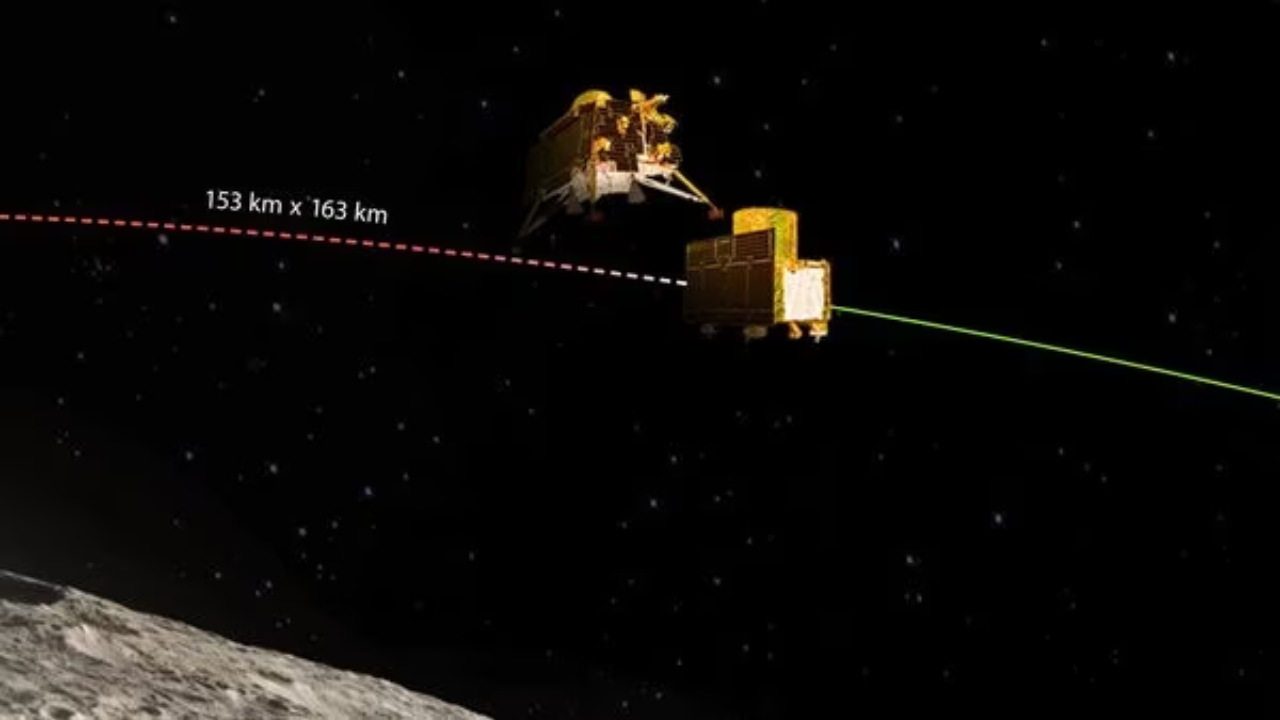In a groundbreaking experiment, the Indian Space Research Organization (ISRO) has successfully maneuvered the Propulsion Module (PM) of Chandrayaan-3 from its lunar orbit to an orbit around Earth. This innovative move marks a significant achievement for ISRO, showcasing the space agency’s capability to execute complex orbital maneuvers.
According to an official statement from ISRO, the PM’s orbit transition involved a series of maneuvers, including an orbit-raising maneuver and a Trans-Earth injection maneuver, ultimately placing the PM in an Earth-bound orbit. The agency highlighted that this unique experiment aimed to derive additional information for future lunar missions and demonstrate mission operation strategies for a sample return mission.
The Chandrayaan-3 mission, launched on July 14, 2023, aimed to demonstrate a soft landing near the lunar south polar region and conduct experiments using the instruments on the Vikram Lander and Pragyaan Rover. On August 23, the Vikram Lander successfully touched down on the Moon, deploying the Pragyaan rover. The mission objectives were declared fully met after the scientific instruments operated continuously for one lunar day, as per the defined mission life.
The primary objective of the PM was to ferry the Lander module from Geostationary Transfer Orbit (GTO) to the final lunar polar circular orbit and separate the Lander. The Spectro-polarimetry of the Habitable Planet Earth (SHAPE) payload in the PM was also operated after separation. Initially planned for three months, the SHAPE payload operations extended due to optimal orbital maneuvers, leaving over 100 kg of fuel in the PM after a month of lunar orbit operations.
With a surplus of fuel, ISRO decided to re-orbit the PM to a suitable Earth orbit, considering collision avoidance measures. The mission plan, designed for October 2023, involved a series of maneuvers, including raising the apolune altitude and performing a Trans-Earth injection maneuver. The PM made four Moon fly-bys before departing the Moon Sphere of Influence (SOI) on November 10.
As of the latest update, the PM is successfully orbiting Earth, having crossed its first perigee on November 22 with an altitude of 1.54 lakhs km. The orbit period is approximately 13 days with a 27-degree inclination, and there is no current threat of close approach to operational Earth-orbiting satellites.
ISRO has been operating the SHAPE payload whenever Earth is in its field of view, including a special operation during a Solar Eclipse on October 28, 2023. The UR Rao Satellite Centre/ISRO’s flight dynamics team developed an analysis tool for this operation, aiming to validate the planning and execution of trajectory and maneuvers for future missions.
The return maneuvers conducted on Chandrayaan-3’s PM offer valuable insights for future missions, including planning and executing trajectory and maneuvers from Moon to Earth, developing software modules for such maneuvers, executing gravity-assisted flybys, and ensuring the controlled end-of-life disposal of the PM to prevent debris creation on the Moon’s surface.























